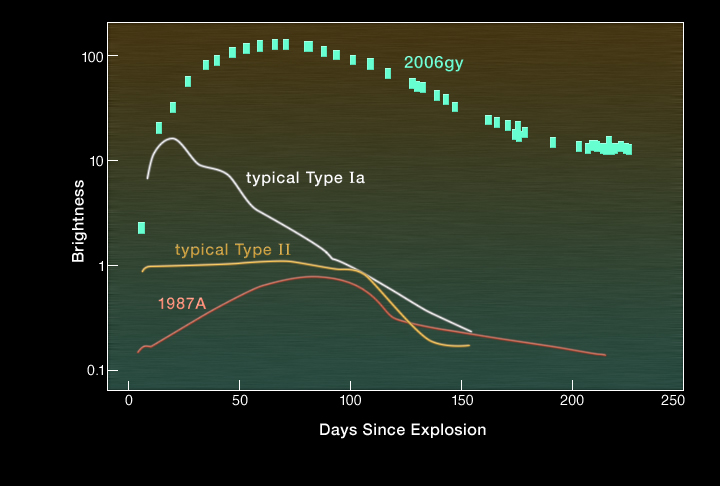Page 1 of 18
Astronomy C
Posted: July 3rd, 2011, 6:15 am
by Jim_R
Re: Astronomy C
Posted: August 30th, 2011, 12:30 pm
by EastStroudsburg13
Stellar evolution anyone?
I like how type 1a supernovae seem to be emphasized this year, since it works well with evolution, but allows it to branch out a little bit into variable stars and other subjects. This could be an interesting topic, although I do admit that I really liked active galaxies last year.
I'm currently working on a DSO table to put on the wiki. You can find it on my user page:
Eaststroudsburg13's Userpage. I have it set up for Epsilon Aurigae (our favorite) as a demonstration, so please take a look at it, and let me know what you think and what you think needs to be added, if anything. I can only put so much information on the table before it starts wrapping around, so there is a limit.
Re: Astronomy C
Posted: August 30th, 2011, 1:47 pm
by astroblue
This is my first year doing astronomy and from what I've read, it's one of the most difficult events

. I think I have enough materials to cover the stellar evolution/supernovae part, but can you guys suggest anything like books or websites to help me learn the physics part of the event? Like reading light curves and spectra and whatnot?
Re: Astronomy C
Posted: August 30th, 2011, 2:13 pm
by EastStroudsburg13
It is rather difficult, since there's a lot of information, but you're allowed a laptop and/or a binder, so you can take a lot in with you. In terms of textbooks, I haven't used any personally (although now would be a good time for me to get one

), so I can't really help you there. In terms of websites, normally just by Googling key topics you can find what you want. However, I can give you a brief overview of light curves and spectra.
Light curves show the magnitude of a star plotted over time. The time is usually measured in Julian days, and this is useful with variable stars like supernovae since they show magnitude changes with time. This picture is an example of a light curve, and it is especially relevant since it's about supernovae:

Light spectra show what wavelengths of light are emitted or absorbed by an object (this is the difference between absorption and emission spectra). This is useful since certain gases have certain spectra associated with them, so you can identify what gases are coming from an object. I'm not that familiar with other types of spectra.
I hope this was helpful. I don't know how advanced you are, so you might know this already.

If you have further questions, feel free to ask.

Re: Astronomy C
Posted: August 30th, 2011, 2:23 pm
by astroblue
Thank you!
I'm not very "advanced" in astronomy, I'm doing astronomy because I think my physics abilites might come in useful here

. I don't have any other questions currently, but I might get some more once my coach hands out the rules lol
Re: Astronomy C
Posted: August 30th, 2011, 6:16 pm
by smartkid222
EASTstroudsburg13 wrote:Stellar evolution anyone?
I like how type 1a supernovae seem to be emphasized this year, since it works well with evolution, but allows it to branch out a little bit into variable stars and other subjects. This could be an interesting topic, although I do admit that I really liked active galaxies last year.
They changed the topic!? Gah.
The rules have not been released yet so how do you know?
Re: Astronomy C
Posted: August 30th, 2011, 6:24 pm
by Schrodingerscat
smartkid222 wrote:
They changed the topic!? Gah.
The rules have not been released yet so how do you know?
The short event descriptions are now on the website.
Re: Astronomy C
Posted: August 30th, 2011, 6:55 pm
by smartkid222
Thanks!
Has stellar evolution been a topic before?
How close is it to variable stars? Would old tests from when the topic was variable stars be good for practice?
Re: Astronomy C
Posted: August 30th, 2011, 9:06 pm
by Infinity Flat
smartkid222 wrote:Thanks!
Has stellar evolution been a topic before?
How close is it to variable stars? Would old tests from when the topic was variable stars be good for practice?
I'm almost positive that an important part of the event will be variable stars. Equally important will be Stellar Evolution in general, and especially Supernovae.
Re: Astronomy C
Posted: August 30th, 2011, 9:32 pm
by salcedam
EASTstroudsburg13 wrote:Stellar evolution anyone?
I like how type 1a supernovae seem to be emphasized this year, since it works well with evolution, but allows it to branch out a little bit into variable stars and other subjects. This could be an interesting topic, although I do admit that I really liked active galaxies last year.
I'm currently working on a DSO table to put on the wiki. You can find it on my user page:
Eaststroudsburg13's Userpage. I have it set up for Epsilon Aurigae (our favorite) as a demonstration, so please take a look at it, and let me know what you think and what you think needs to be added, if anything. I can only put so much information on the table before it starts wrapping around, so there is a limit.
I like what you did. I don't know if it's possible to do this without having the table wrap, but you could add more than one image of each DSO (preferably one of each type: infrared, composite, etc.). Besides that, it looks good.

